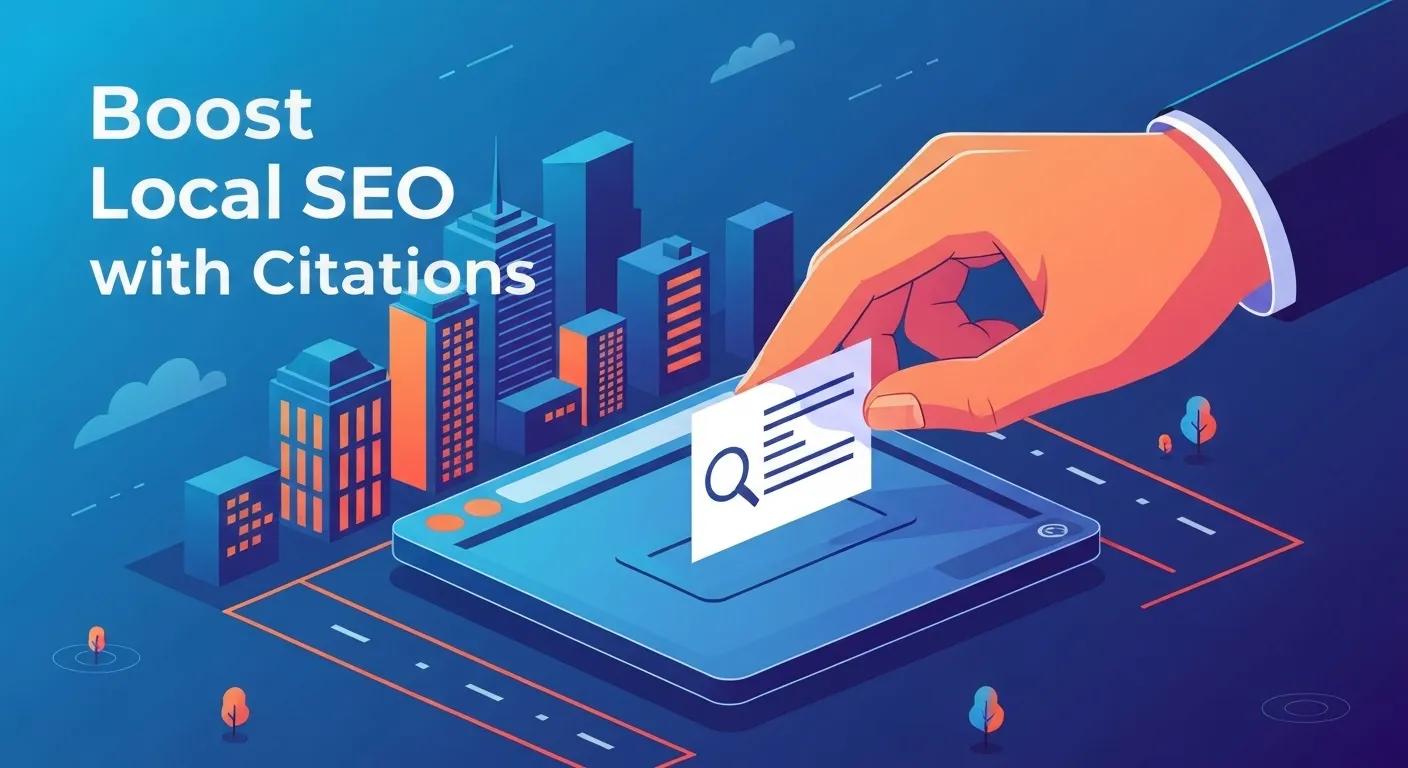Responsive web design is a design approach that aims to create websites that provide an optimal viewing experience across different devices and screen sizes. With the increasing use of smartphones and tablets, it has become crucial for websites to be responsive in order to cater to the needs of mobile users. In today’s digital age, where people are constantly accessing the internet on the go, responsive web design is more important than ever.
Key Takeaways
- Responsive web design is crucial for ensuring a positive user experience across all devices.
- User experience design involves understanding user needs and designing interfaces that meet those needs.
- Accessibility is an important consideration in responsive web development to ensure all users can access content.
- CSS Grid and Flexbox are powerful tools for creating responsive layouts that adapt to different screen sizes.
- Optimizing images can improve website speed and user experience, especially on mobile devices.
Understanding the Importance of Responsive Web Design
Responsive web design refers to the practice of designing and developing websites that can adapt and respond to different devices and screen sizes. This means that the layout, images, and content of a website will automatically adjust based on the device being used to view it. The benefits of responsive web design are numerous. Firstly, it provides a consistent user experience across all devices, ensuring that users can easily navigate and interact with the website regardless of whether they are using a desktop computer or a mobile device. This can lead to increased user engagement and satisfaction.
Statistics on mobile usage further highlight the importance of responsive web design. According to Statista, as of 2021, over 54% of global website traffic comes from mobile devices. This means that more than half of internet users are accessing websites through their smartphones or tablets. Additionally, Google has stated that mobile-friendliness is a ranking factor in its search algorithm, meaning that websites that are not mobile-friendly may be penalized in search engine rankings. Therefore, having a responsive website is not only important for user experience but also for search engine optimization.
The Fundamentals of User Experience Design
User experience design (UX design) is a crucial aspect of responsive web development. It focuses on creating websites that are user-friendly, intuitive, and enjoyable to use. In the context of responsive web design, UX design plays a key role in ensuring that the website provides a seamless experience across different devices.
The principles of user experience design include:
1. Usability: The website should be easy to navigate and use, with clear and intuitive navigation menus, buttons, and links.
2. Accessibility: The website should be accessible to all users, including those with disabilities. This involves ensuring that the website is compatible with assistive technologies such as screen readers and that it meets accessibility standards.
3. Consistency: The website should have a consistent design and layout across all pages, providing a cohesive user experience.
4. Performance: The website should load quickly and efficiently, minimizing the waiting time for users.
5. Visual Design: The website should have an appealing visual design that is consistent with the brand identity and target audience.
The Role of Accessibility in Responsive Web Development
| Metrics | Description |
|---|---|
| WCAG Compliance | The level of compliance with the Web Content Accessibility Guidelines (WCAG) 2.1, which outlines the standards for making web content accessible to people with disabilities. |
| Screen Reader Compatibility | The ability of a website to be read by a screen reader, a software program that reads aloud the content of a website for people with visual impairments. |
| Keyboard Navigation | The ease with which a user can navigate a website using only a keyboard, which is important for people with motor disabilities who cannot use a mouse. |
| Color Contrast | The contrast between the foreground and background colors of a website, which is important for people with visual impairments who may have difficulty distinguishing between colors. |
| Alternative Text | The use of alternative text to describe images, which is important for people with visual impairments who cannot see the images on a website. |
| Responsive Design | The ability of a website to adapt to different screen sizes and devices, which is important for people with disabilities who may use different devices to access the web. |
Accessibility in web development refers to the practice of designing and developing websites that can be accessed and used by people with disabilities. This includes individuals with visual impairments, hearing impairments, motor impairments, and cognitive impairments.
In the context of responsive web design, accessibility is crucial because it ensures that all users can access and use the website regardless of their abilities or the devices they are using. This involves implementing features such as alternative text for images, keyboard navigation support, and proper color contrast for users with visual impairments.
To create accessible websites, developers can follow these tips:
1. Use semantic HTML: Semantic HTML helps screen readers and other assistive technologies understand the structure and content of the website.
2. Provide alternative text for images: Alternative text (alt text) describes the content of an image for users who cannot see it. This is important for users with visual impairments who rely on screen readers.
3. Ensure keyboard accessibility: Users should be able to navigate and interact with the website using only a keyboard. This is important for users who cannot use a mouse or other pointing devices.
4. Use proper color contrast: Ensure that there is sufficient contrast between text and background colors to make the content readable for users with visual impairments.
Creating Responsive Layouts with CSS Grid and Flexbox
CSS Grid and Flexbox are two powerful layout systems in CSS that can be used to create responsive web designs. CSS Grid allows developers to create complex grid-based layouts, while Flexbox provides a flexible way to align and distribute elements within a container.
The benefits of using CSS Grid and Flexbox for responsive web design are numerous. Firstly, they provide a more efficient and flexible way to create responsive layouts compared to traditional methods such as floats and positioning. They also allow for more control over the placement and alignment of elements, making it easier to create visually appealing designs.
Examples of responsive layouts created with CSS Grid and Flexbox include:
1. Responsive grids: CSS Grid can be used to create responsive grids that automatically adjust the number of columns based on the screen size. This allows for a consistent layout across different devices.
2. Flexible containers: Flexbox can be used to create flexible containers that automatically adjust the size and position of elements based on the available space. This is particularly useful for creating responsive navigation menus and flexible content sections.
3. Media queries: Media queries can be used in conjunction with CSS Grid and Flexbox to apply different styles and layouts based on the screen size. This allows for a truly responsive design that adapts to different devices.
Optimizing Images for Faster Loading and Improved User Experience

Image optimization is an important aspect of responsive web design as it helps improve website performance and user experience. Large images can significantly slow down the loading time of a website, especially on mobile devices with slower internet connections.
To optimize images for faster loading, developers can use techniques such as:
1. Compressing images: Compressing images reduces their file size without significantly affecting their quality. This can be done using image compression tools or by using image formats that provide better compression, such as WebP.
2. Lazy loading: Lazy loading is a technique that defers the loading of images until they are actually needed. This can help improve the initial loading time of a website, especially for pages with a large number of images.
3. Using responsive images: Responsive images are images that automatically adjust their size and resolution based on the device and screen size. This ensures that users are not downloading unnecessarily large images on mobile devices.
There are also various tools available for image optimization, such as:
1. ImageOptim: ImageOptim is a free tool for Mac that optimizes images by removing unnecessary metadata and reducing file size.
2. TinyPNG: TinyPNG is an online tool that uses smart lossy compression techniques to reduce the file size of PNG and JPEG images.
3. Cloudinary: Cloudinary is a cloud-based image management platform that provides various image optimization features, including automatic resizing, compression, and lazy loading.
Developing Responsive Navigation Menus
Responsive navigation menus are an essential component of responsive web design as they allow users to easily navigate the website on different devices and screen sizes. A well-designed responsive navigation menu should be intuitive, easy to use, and accessible.
There are several types of responsive navigation menus that can be used, including:
1. Hamburger menu: The hamburger menu is a popular choice for mobile devices as it allows for a compact and collapsible menu that can be easily accessed by tapping on a hamburger icon.
2. Off-canvas menu: An off-canvas menu slides in from the side of the screen when activated, providing a hidden navigation menu that does not take up much space.
3. Dropdown menu: Dropdown menus are commonly used in desktop designs and can be adapted for mobile devices by using a combination of media queries and JavaScript to create a responsive dropdown menu.
When creating responsive navigation menus, developers should consider the following tips:
1. Keep it simple: Avoid cluttering the navigation menu with too many options. Stick to the most important pages and use submenus or dropdowns for additional options.
2. Use clear labels: Make sure the labels for each menu item are clear and descriptive, so users know exactly what to expect when they click on them.
3. Test on different devices: Test the navigation menu on different devices and screen sizes to ensure that it works well and is easy to use.
Testing and Debugging Responsive Websites
Testing and debugging are crucial steps in responsive web development to ensure that the website functions correctly and provides a seamless user experience across different devices and screen sizes.
There are several tools available for testing and debugging responsive websites, including:
1. Browser developer tools: Most modern web browsers come with built-in developer tools that allow developers to inspect and debug websites. These tools often include features such as device emulation, which allows developers to test how the website looks and behaves on different devices.
2. Responsive design testing tools: There are various online tools available that allow developers to test how a website looks on different devices and screen sizes. These tools provide a visual representation of the website on different devices, allowing developers to identify any layout or design issues.
3. Automated testing tools: Automated testing tools can be used to test the functionality and performance of a website across different devices and screen sizes. These tools can simulate user interactions and generate reports on any issues or errors found.
Common issues that may arise in responsive web design include:
1. Layout inconsistencies: Elements may not align or display correctly on certain devices or screen sizes, resulting in layout inconsistencies.
2. Image scaling issues: Images may not scale properly, resulting in distorted or pixelated images on certain devices.
3. Navigation problems: Navigation menus may not work correctly or may be difficult to use on certain devices, leading to a poor user experience.
To fix these issues, developers can use techniques such as:
1. Media queries: Media queries can be used to apply different styles and layouts based on the screen size. By using media queries, developers can target specific devices or screen sizes and apply custom styles or fixes.
2. Responsive design testing: Regularly testing the website on different devices and screen sizes can help identify any layout or design issues that need to be addressed.
3. Cross-browser testing: Testing the website on different web browsers can help identify any compatibility issues that may arise.
Implementing Responsive Typography and Font Scaling
Typography plays a crucial role in responsive web design as it affects the readability and overall visual appeal of the website. Implementing responsive typography involves ensuring that the text adjusts and scales appropriately based on the device and screen size.
To implement responsive typography, developers can use techniques such as:
1. Fluid typography: Fluid typography involves using relative units such as percentages or ems to define font sizes. This allows the text to scale proportionally based on the available space.
2. Media queries: Media queries can be used to apply different font sizes based on the screen size. This ensures that the text remains readable and legible on different devices.
3. Viewport units: Viewport units such as vw (viewport width) and vh (viewport height) can be used to define font sizes relative to the size of the viewport. This allows for more precise control over font scaling.
When implementing font scaling, developers should consider the following tips:
1. Set a minimum font size: To ensure readability, set a minimum font size that will be applied regardless of the screen size. This prevents the text from becoming too small on smaller devices.
2. Test on different devices: Test the website on different devices and screen sizes to ensure that the text remains readable and legible.
3. Use web fonts wisely: Web fonts can significantly impact website performance, especially on mobile devices with slower internet connections. Use web fonts sparingly and consider using system fonts or fallback fonts for better performance.
Designing for Different Devices and Screen Sizes
Designing for different devices and screen sizes is a crucial aspect of responsive web design. It involves considering the unique characteristics and constraints of each device and ensuring that the website provides an optimal user experience across all devices.
To design for different devices and screen sizes, developers can use techniques such as:
1. Mobile-first design: Mobile-first design involves designing the website for mobile devices first and then progressively enhancing it for larger screens. This ensures that the website is optimized for mobile users, who make up a significant portion of internet users.
2. Responsive breakpoints: Responsive breakpoints are specific screen widths at which the layout or design of the website changes. By defining responsive breakpoints, developers can ensure that the website adapts and responds appropriately to different screen sizes.
3. Content prioritization: On smaller screens, it may be necessary to prioritize certain content or features over others to ensure a seamless user experience. This involves identifying the most important content or features and making them more prominent or accessible on smaller screens.
Examples of responsive websites designed for different devices and screen sizes include:
1. Airbnb: Airbnb’s website is designed to provide a seamless user experience across different devices, allowing users to easily search and book accommodations on both desktop and mobile devices.
2. The New York Times: The New York Times’ website is designed to adapt and respond to different screen sizes, providing an optimal reading experience on both desktop and mobile devices.
3. Apple: Apple’s website is designed to showcase its products and services on different devices, providing a visually appealing and intuitive user experience.
Best Practices for Responsive Web Development
To ensure the success of a responsive web development project, it is important to follow best practices. Some key best practices for responsive web development include:
1. Plan and design with mobile in mind: Start the design process by considering the needs and constraints of mobile users. This will help ensure that the website is optimized for mobile devices from the beginning.
2. Use a mobile-first approach: Design and develop the website for mobile devices first and then progressively enhance it for larger screens. This ensures that the website is optimized for mobile users, who make up a significant portion of internet users.
3. Test on different devices and screen sizes: Regularly test the website on different devices and screen sizes to ensure that it provides a seamless user experience across all platforms.
4. Optimize performance: Optimize the performance of the website by minimizing file sizes, reducing the number of HTTP requests, and using caching techniques. This will help improve the loading time of the website, especially on mobile devices with slower internet connections.
5. Follow accessibility guidelines: Ensure that the website meets accessibility standards and guidelines to ensure that it can be accessed and used by all users, including those with disabilities.
6. Stay up-to-date with responsive web design trends: Responsive web design is constantly evolving, with new techniques and technologies being introduced regularly. Stay up-to-date with the latest trends and best practices to ensure that your website remains competitive and provides an optimal user experience.
In conclusion, responsive web design is crucial in today’s digital age where people are constantly accessing the internet on different devices and screen sizes. It ensures that websites provide an optimal viewing experience across all platforms, leading to increased user engagement and satisfaction. By understanding the importance of responsive web design and implementing it effectively, businesses can stay competitive and reach a wider audience. Additionally, responsive web design improves search engine optimization (SEO) efforts, as search engines prioritize mobile-friendly websites in their rankings. Overall, investing in responsive web design is essential for businesses looking to thrive in the digital landscape and provide a seamless user experience for their customers.
If you’re interested in learning more about responsive web development, you may also want to check out this article on SEO services for small businesses. It provides valuable insights into how optimizing your website can help improve your online visibility and attract more customers. Click here to read the full article.
FAQs
What is responsive web development?
Responsive web development is the process of creating websites that can adapt to different screen sizes and devices, providing an optimal viewing experience for users.
Why is responsive web development important?
Responsive web development is important because it ensures that websites are accessible and user-friendly on all devices, including desktops, laptops, tablets, and smartphones. This can improve user engagement and increase conversions.
What are the benefits of responsive web development?
The benefits of responsive web development include improved user experience, increased accessibility, better search engine rankings, and reduced development and maintenance costs.
How does responsive web development work?
Responsive web development works by using flexible layouts, images, and media queries to adjust the appearance and functionality of a website based on the screen size and device being used.
What are some best practices for responsive web development?
Some best practices for responsive web development include designing for mobile-first, using a grid system, optimizing images and media, and testing on multiple devices and screen sizes.
What are some common challenges in responsive web development?
Some common challenges in responsive web development include browser compatibility issues, performance optimization, and maintaining consistency across different devices and screen sizes.







